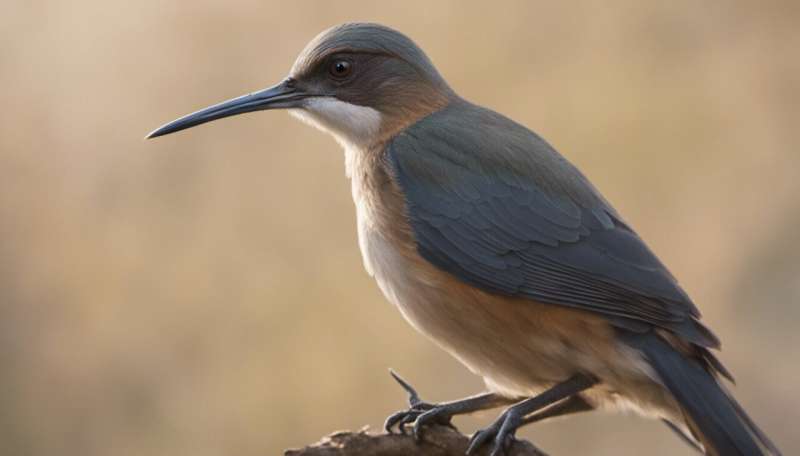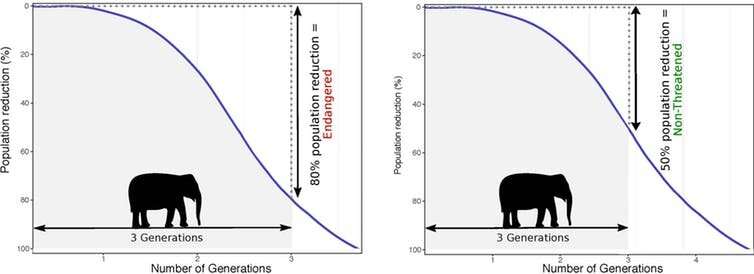Many species could be even more likely to go extinct than we realise

More than a million species are at risk of extinction according to a new report on biodiversity. But even some species that aren't considered endangered may be less safe than people think. A new study published in the Journal of Applied Ecology found that some methods for measuring a species' generation time might underestimate the likelihood that some species will die out.
A species' generation time is how long it takes for a generation to be replaced by its mature offspring. This is different for every species and dramatically impacts how quickly a species can respond to changes in their environment. If based on incomplete data or the wrong method, this can seriously distort how we assess the risk of extinction to a given species.
The generation time of a mouse is only a few months, whereas the African elephant has a generation time of 22 years. The longer the generation time, the slower a species can adapt to environmental changes and may, therefore, be more likely to go extinct.
The rate at which species are dying out today is at least 100 times as high as it should naturally be. As extinction rates accelerate, the tools used to measure the risk to different species need improving to give conservationists an accurate picture. That begins by replacing traditional assumptions with better tools.
How errors overestimate species survival
The challenge of accurately assessing extinction risk begins with a lack of data on endangered species. Even for mammals and birds – which are the most well studied groups – population data covers a mere 4.4% of the 1,079 threatened mammals and 3.5% of the 1,183 threatened birds. To bridge the gaps, scientists often rely on assumptions regarding survival, reproduction and generation time.

We found that in some risk assessment models that rely on these assumptions, errors can emerge. This is because population reduction in some of the assessed models is measured on the scale of three times a species' generation time. If a species is believed to mature and produce offspring in five years, then how much its population has declined will be measured over a 15-year interval.
But if a species' generation time is underestimated, population reduction is measured over a much shorter time period. It therefore underestimates how much the population is shrinking and, in turn, the threat status of the species. This can lead us to believe that the species is less endangered than it really is.
We tested the influence of errors in different measures of generation time, including those used by the IUCN Red List assessments – the world authority on the conservation status of species – and found that these errors could potentially lead to an overly optimistic assessment of extinction risk for some species.
To overcome this, we compared different types of errors in seven commonly used measures of generation time. By having a clear picture of the types of errors that impact the estimation of generation time, conservationists can better account for these factors in extinction risk assessments when data is scarce.
When scientists don't have data on survival and fertility for a species, we propose a new estimate which would avoid relying on unfounded assumptions. This predicts a species' generation time from its body mass and reproductive lifespan – data which is usually more readily available for many species.
Still, the lack of data is a thorny problem for making accurate calculations. We're planning to explore how to fill some of these knowledge gaps by comparing survival and reproduction data from wild and captive populations, using data curated by nearly 1,200 zoos and aquariums over 40 years, on more than 21,000 species.
Journal information: Journal of Applied Ecology
Provided by The Conversation
This article is republished from The Conversation under a Creative Commons license. Read the original article.![]()





















